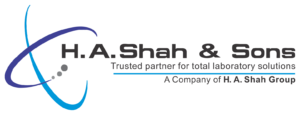Mines Demo Account – Unlock Your Trading Potential with a Free Practice Platform
-
Mines Demo Account – Unlock Your Trading Potential with a Free Practice Platform
-
Exploring the Features of a Practice Environment
-
Customizable Trading Environment for Individual Needs
-
Access to Real-Time Market Data During Practice
-
Simulated Trading Tools for Skill Development
-
Best Practices for Utilizing the Mines Demo Account
Mines Demo Account – Unlock Your Trading Potential with a Free Practice Platform
In the fast-paced world of finance, the path from novice to skilled market participant can seem daunting. Engaging in practical exercises without the fear of financial loss is essential for mines demo those eager to master the art of strategic asset allocation. A virtual environment designed for trial runs allows traders to experiment with various approaches while gaining valuable insights into market dynamics.
Utilizing a no-cost simulation interface empowers users to familiarize themselves with various instruments. Whether an individual is interested in stocks, cryptocurrencies, or commodities, a simulated interface serves as an invaluable tool for refining techniques and developing a robust decision-making framework. Participants can analyze market trends, experiment with different strategies, and track their performance without the pressure of real-money risk.
For those keen on enhancing their skills, the incorporation of diverse analytical tools is pivotal. Many platforms offer comprehensive resources, such as real-time data feeds, educational materials, and community forums, enriching the learning experience. This multifaceted approach not only facilitates skill enhancement but also fosters a deeper understanding of market mechanisms, ultimately paving the way for more informed and confident investment choices.
Exploring the Features of a Practice Environment
Utilizing a practice environment can significantly enhance your experience in the financial markets. By engaging with this type of platform, you can access a range of valuable features designed to facilitate skill development and strategy assessment.
One standout characteristic of this platform is its realistic market simulations. Users can replicate actual trading scenarios, which helps in understanding market dynamics without the risk of monetary loss. The simulated environment allows participants to experiment with various trading techniques under real-time conditions.
| Realistic Simulation | Emulates live market conditions. | Enhances decision-making skills. |
| User-Friendly Interface | Intuitive design for ease of navigation. | Reduces learning curve significantly. |
| Variety of Instruments | Wide range of assets, including forex, commodities, and stocks. | Enables diverse strategy testing across multiple markets. |
| Performance Analytics | Tracks user activity and performance metrics. | Helps in assessing strengths and weaknesses. |
| Educational Resources | Access to tutorials and strategy guides. | Improves overall knowledge base and confidence. |
Active analysis of performance metrics enables users to refine their approaches effectively. By reviewing trends and outcomes, individual performance can be significantly improved over time. Engaging with comprehensive educational materials can further demystify complex financial concepts, aiding in the development of a robust market understanding.
Another beneficial aspect is the opportunity to collaborate with a community. Interaction with peers allows for the exchange of ideas and strategies, fostering a collaborative learning environment that can lead to enhanced outcomes for all participants.
In summary, this practice environment provides an array of features that cater to both novices and seasoned investors. By capitalizing on these tools, users can acquire critical skills, develop profitable strategies, and prepare for actual market engagement. Taking advantage of this resource could prove invaluable on your financial journey.
Customizable Trading Environment for Individual Needs
In the competitive landscape of financial markets, a tailored workspace can significantly enhance performance. Adapting the trading interface to suit personal preferences is paramount for developing effective strategies.
Consider the following features for creating a personalized setup:
- Charting Tools: Select from various chart types such as candlestick, line, or bar charts. Customize indicators to focus on trends that matter most to you, such as moving averages, RSI, or MACD.
- Watchlists: Build specific watchlists that align with your interests. This helps streamline the tracking of particular assets or sectors, reducing information overload.
- Alerts & Notifications: Set tailored alerts for vital price levels, volume spikes, or news updates. This ensures that critical information is received promptly, allowing for timely decision-making.
- Layout Flexibility: Modify the layout by resizing, adding, or removing panels. A clean and organized interface can increase efficiency, enabling better focus on key metrics.
To truly optimize the workspace, integrate these additional elements:
- Color Schemes: Experiment with color themes to reduce eye strain and enhance visibility. Neutral tones can enhance concentration, while vivid colors might draw attention to significant data points.
- Data Feeds: Choose real-time data feeds according to your asset preferences. This can include forex, commodities, or cryptocurrencies, ensuring that information is relevant to your specific activities.
- Educational Resources: Incorporate access to tutorials and trading guides directly within the platform. This allows for continuous improvement and skill enhancement in a familiar environment.
- Community Features: Leverage forums or social tools integrated into the platform. Engaging with other participants can provide valuable insights and diverse perspectives on market trends.
Ultimately, customizing the trading interface not only supports personal comfort but fosters a more effective decision-making process. By aligning the environment with individual strategies and needs, traders can navigate the complexities of the financial world with greater confidence and clarity.
Access to Real-Time Market Data During Practice
Engaging in simulated trading environments offers an excellent opportunity to refine skills. One key aspect that can enhance this experience is the availability of real-time market data. When participants can access live price feeds, they gain insights into current market dynamics, which is essential for developing effective strategies.
Utilizing platforms that provide streaming quotes allows users to analyze fluctuations and trends as they happen. This feature is crucial for identifying entry and exit points in various asset classes, including stocks, currencies, and commodities. Monitoring live movements enables practitioners to understand volatility and to gauge market sentiment accurately.
Incorporating tools such as live charts and analytical indicators adds depth to the learning process. Candlestick charts, for example, can reveal patterns and potential reversals, while technical indicators like moving averages assist in determining overall trends. Engaging with these resources fosters a deeper statistical comprehension and boosts decision-making capabilities.
Furthermore, real-time data feeds can simulate actual trading conditions, allowing users to experience the pressure of live environments. This immersion helps to cultivate emotional resilience, as participants learn to manage stress and make rapid decisions effectively–skills that are vital when transitioning to actual markets.
To maximize the benefits of live market data, users should explore various online resources that aggregate financial news and analysis. Keeping abreast of macroeconomic indicators, earnings reports, and geopolitical events can provide context for market movements, enhancing strategic responses during practice sessions.
Ultimately, utilizing comprehensive, up-to-the-minute information during simulated exercises not only enhances skills but also prepares individuals for the complexities of real-world trading scenarios. Engage with advanced data tools to effectively bridge the gap between theory and practice.
Simulated Trading Tools for Skill Development
Utilizing virtual trading platforms provides an invaluable opportunity for aspiring investors to enhance their abilities without incurring financial risks. These environments replicate the actual market, enabling users to test strategies, analyze trends, and refine decision-making processes. Key components of these systems include:
1. Interactive Charts: Access to live market data through customizable charts allows for in-depth technical analysis. Utilizing tools like trendlines, moving averages, and candlestick patterns can streamline forecasting and improve timing for market entries and exits.
2. Market Indicators: Instruments such as Relative Strength Index (RSI), Bollinger Bands, and MACD give insight into market momentum and potential reversals. Familiarity with these indicators can lead to more informed trading choices and risk management.
3. Portfolio Simulation: Users can create virtual portfolios to track performance over time. This feature allows for the experimentation of different asset allocations and the assessment of strategies under varying market conditions.
4. Risk Management Tools: Setting stop-loss and take-profit orders within the simulated environment fosters a disciplined approach. Understanding how to protect capital is crucial for long-term success, making these tools vital in the learning process.
5. Educational Resources: Many platforms provide extensive tutorials, webinars, and market analysis tools. Engaging with these resources can accelerate the learning curve and enhance understanding of complex concepts.
Integrating these simulated tools into a training regimen equips individuals with practical skills necessary for real-time market participation. Regular practice fosters confidence and equips users to better navigate the challenges inherent in dynamic trading scenarios.
Best Practices for Utilizing the Mines Demo Account
Maximizing the use of a simulated environment is crucial for individuals aiming to enhance their financial market skills. Here are several strategies to consider:
Set Clear Goals: Define specific objectives for each session. Whether it’s mastering a particular strategy or understanding market dynamics, having a target keeps efforts focused.
Explore Different Strategies: Use the opportunity to experiment with various techniques. Test day trading, swing trading, or long-term investment approaches to find what suits your style best.
Maintain a Trading Journal: Document each transaction, noting the rationale behind decisions and the outcomes. This practice fosters reflection and aids in identifying successful patterns as well as mistakes to avoid in real scenarios.
Analyze Historical Data: Review past performance metrics within the platform. Understanding how previous trades fared in different market conditions provides valuable insights and can inform future actions.
Control Emotions: Simulated environments allow for the exploration of emotional responses to market fluctuations. Practice staying calm and logical during volatility to build emotional resilience for real-life situations.
Review and Adapt: Regularly evaluate your approach based on experiences. Identify what’s working and make adjustments to refine strategies continuously. Flexibility is key to evolving as a participant in the financial markets.
Utilize Available Resources: Take advantage of tutorials, webinars, and community forums related to simulated trading. Engaging with experts and peers can provide new perspectives and improve knowledge.
Experiment with Risk Management: Implement various risk management techniques. Test out stop-loss orders, position sizing, and diversification strategies to determine what practices best safeguard capital.
Commit to Regular Practice: Consistency is essential for skill development. Establish a routine that allows for frequent interaction with the simulated platform, ensuring steady progress.
By applying these methods, users can significantly enhance their capabilities and confidence as they prepare for real-world trading scenarios.

